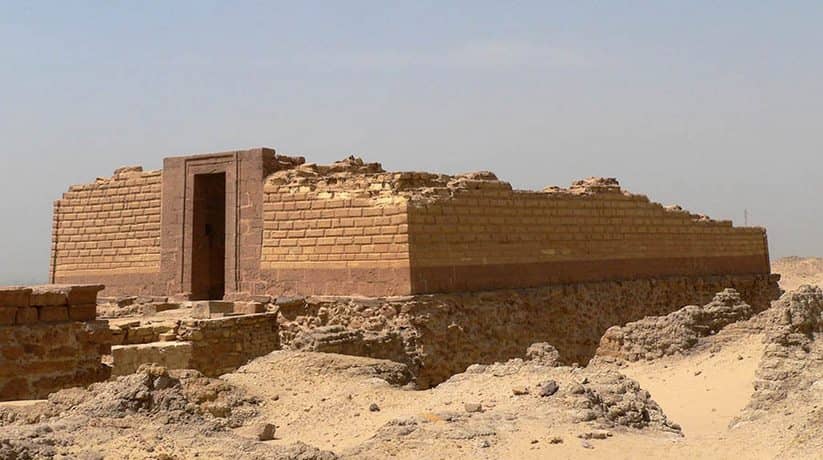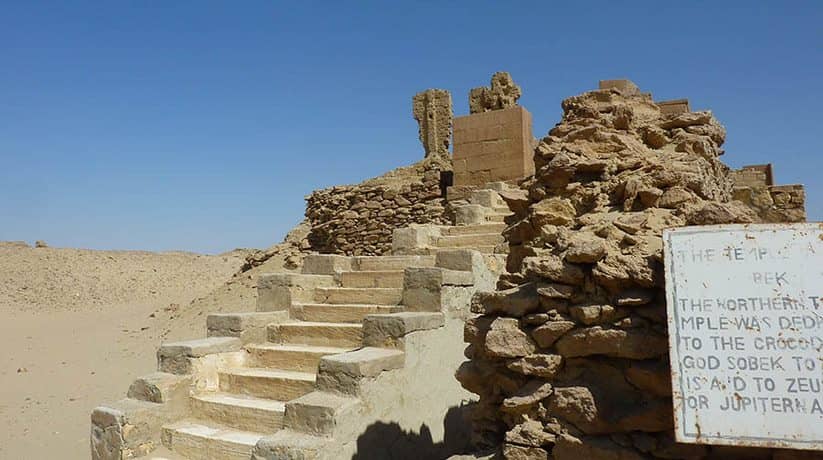Karanis Fayoum Egypt tours, prices, booking, reviews
Karanis Fayoum Egypt or Kom Oshim located in fact in Fayoum, Egypt. In fact, Karanis Fayoum is the first village when you travel through the desert road from Cairo. Moreover, it is the center for visiting several sites of interest. The site situated to the north-east of Qarun’s Lake. In fact, the site boasts a small museum which almost hidden in its own gardens. The museum recently renovated and includes artifacts which found in Fayoum. The artifacts date back to the prehistoric and Roman periods. In fact, the museum has some good Middle Kingdom models from Hawara. It also has the colossal head of a Roman god from Karanis. Moreover, it also has many items of pottery and coins which found in Fayoum. The museum temperature controlled and well-lit.
The museum also exhibits two of the famous “Fayoum Portraits”. In fact, they were personal portraits which painted on wood or linen. They covered the face of the mummy towards the end of the Graeco-Roman times. The other Portraits seen in Cairo Museum. During this time the Egyptians still had a great belief in resurrection after death. The features of the deceased painted to allow the spirits to recognize the body. The portraits sometimes painted in encaustic powdered pigments. In fact, they mixed with beeswax and applied with brush or scalpel. The others used tempera or water-based paints. The faces are always serious and have large dark and staring eyes. They often portrayed in the prime of life or youthful. Moreover, they always wear their finest clothes and jewelry.
Further details about Karanis Fayoum Egypt:
In fact, the portraits influenced Coptic art in Egypt. They provide a link between the art of the ancient Egyptians and later portraiture. Some mummy-portraits found in other areas of Egypt. But in fact, the best collection came from the Fayoum areas. They are of ancient Philadelphia, Karanis and Hawara. Karanis best known as ancient “Karanis”. In fact, it is the largest of the Graeco-Roman town sites in the Fayoum. The town occupied for a total period of around seven centuries. It saw many changes after the end of dynastic rule in Egypt. The site entered from the grounds of the museum. The first real excavations at the site began in 1925. They undertaken by the University of Michigan.
In fact, the town provided a valuable source of information on everyday life. It also did for the religious cults, administration and industries during this period. Many papyri and documents also found. The Michigan team found five levels of stratigraphy. It was during their excavations over the three main areas they covered. The archaeological site of Karanis situated on a huge mound. It rises 12 m above the surrounding plain. The town founded by Ptolemy II in the 3rd century BC. It was as a garrison for his troops, but prospered and grew. In fact, it was because of its accessibility from more populated cities to the north. At the time of building the town would have been on the shores of Qarun’s Lake.
More details about Karanis Fayoum Egypt:
The houses arranged in clusters around the two main thoroughfares. They run from north to south and range in style. The style is from simple mud-brick dwellings to the more elaborate villas. Remains of millstones and olive presses still lie on the ground. There were also six dovecotes. They found in the ruins like those seen in the Fayoum today. Many occupations and industries represented in the town. In fact, it would appear that the majority were farmers. The farmers worked on the fertile agricultural land of the surrounding area. Ten large granaries and seven smaller ones have uncovered at Karanis Egypt. The town built around two temples of the Ptolemaic Period. Information from excavations at the site reflects the religious preoccupations of its inhabitants.
Different Egyptian, Greek or Roman deities recorded there. The southern temple built on the site of an earlier structure. In fact, it is the largest of the two. It dedicated to the crocodile-god (Sobek, or Suchos). Sobek worshiped here as Pnepheros and Petesuchos. The southern temple built of limestone and not decorated. It follows the conventional Egyptian plan of a quay at the head of a processional way. It leads through a paved colonnaded courtyard to the temple. The main entrance gate bears an inscription of Nero which dedicated the temple. A gate of Vespasian lies to the east, beyond a small sacred lake. In fact, the structure contains three chambers. The largest room gave access to a vestibule from which the sanctuary entered. From the roof there is a good view of the town of Karanis and the fertile land to the south.
Further details about Karanis Fayoum Egypt:
Deep niches in the walls of the vestibule used to contain the mummies of the sacred crocodiles. Many mummified crocodiles have found buried at Karanis or Kom Oshim. In the sanctuary itself a large altar reveals a low hidden chamber. It is beneath which used by the priests to deliver oracles. The northern temple, constructed on an earlier site. It also dates back to the end of the 1st century AC. In fact, it has no inscriptions at all. This gray limestone structure faces north and smaller than the southern temple.
It once surrounded by a mud-brick temenos wall which now destroyed. There are two small entrance pylons and the outer corners of the temple. They decorated with four slender columns. A large stone altar, also with an oracle niche, dominates the sanctuary. In fact, the site occupies a unique place in the Graeco-Roman monuments of Egypt.
How to get to Karanis in Fayoum:
Karanis found near the entrance to the Fayoum from the Cairo desert road. It is or about 56 km to the north-east of Fayoum City. Moreover, it is on a huge mound at the edge of the desert. The museum is open daily from 9.00 am to 4.00 pm. Tickets for Kom Oshim costs 25 Egyptian pound. An extra 10 Egyptian pound for the museum.
















